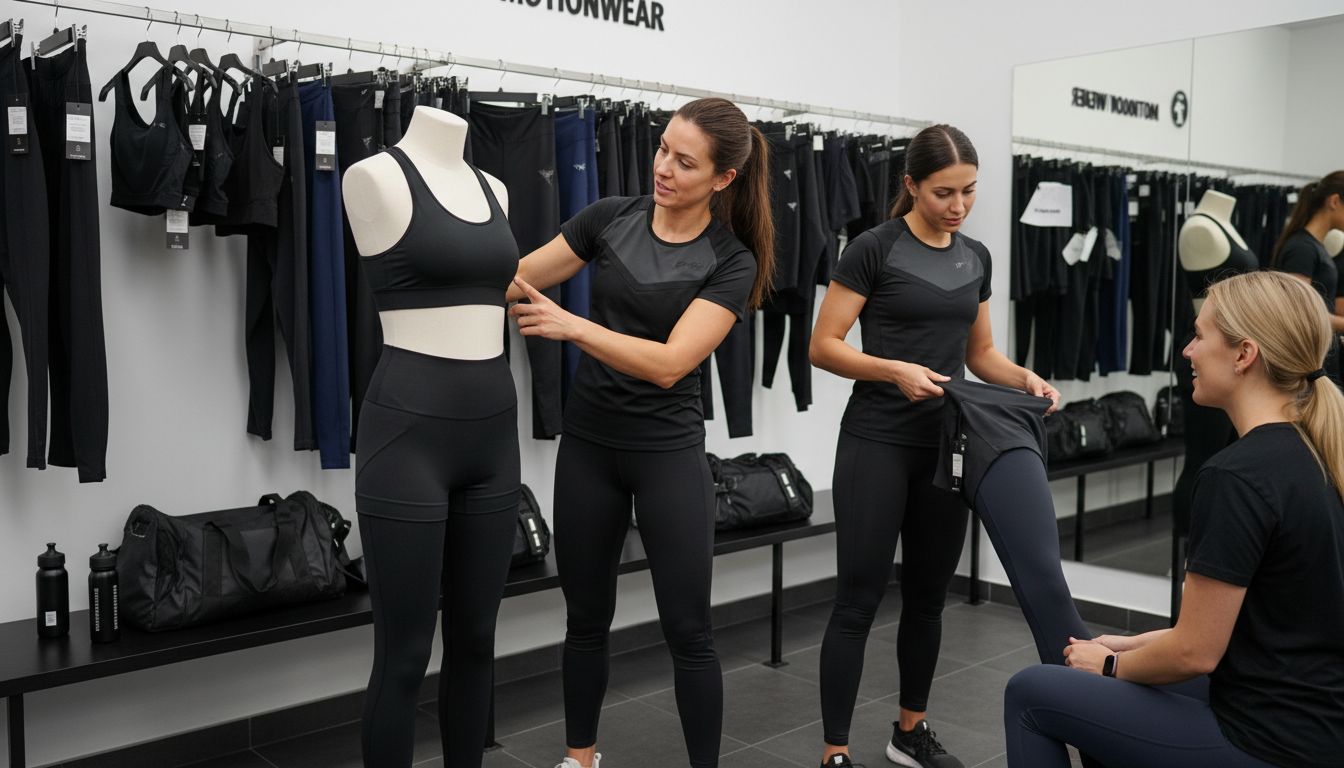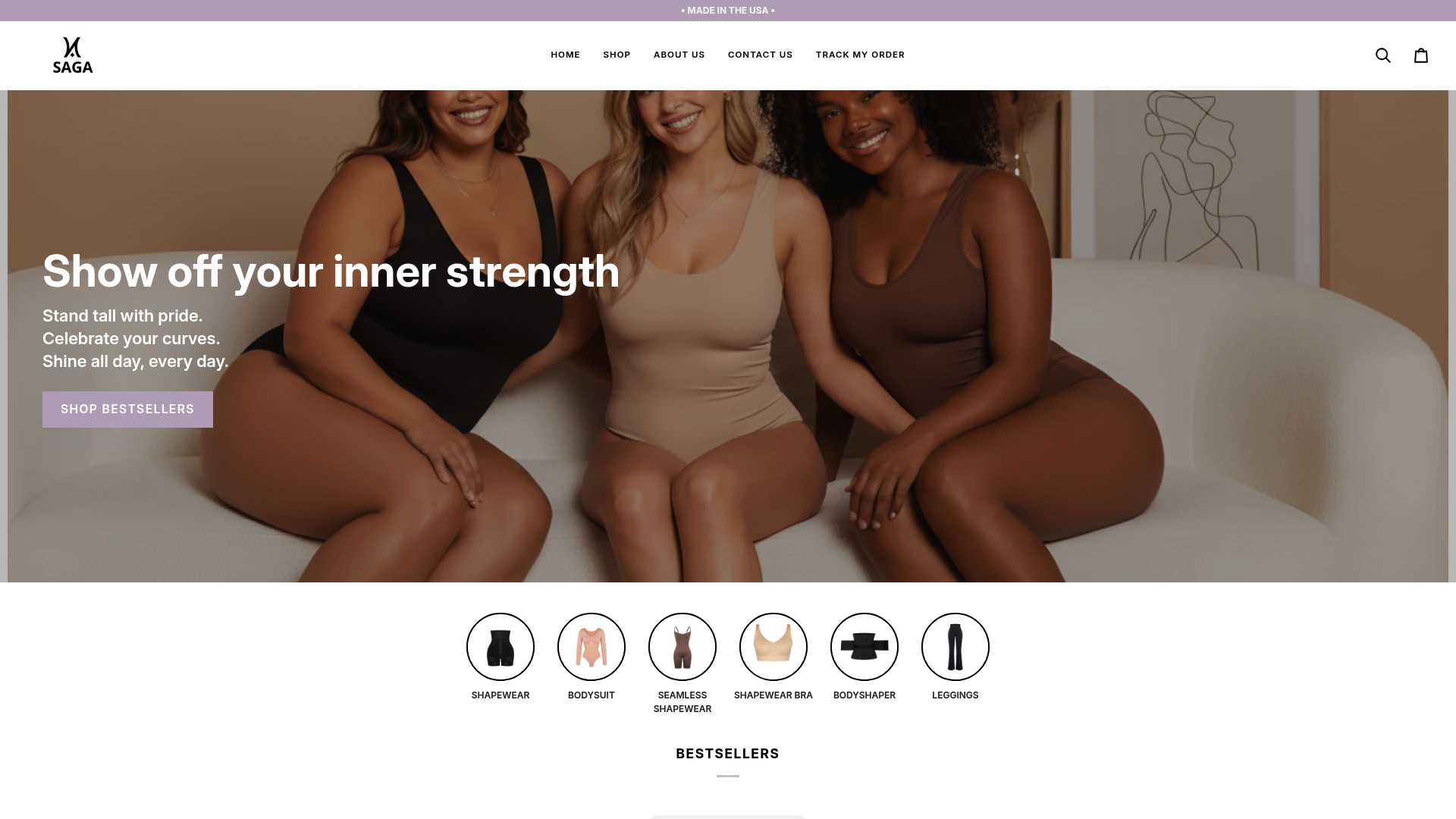More than 80 percent of adults report feeling more confident when they wear the right shapewear or leggings. These garments do far more than smooth out lines or add a layer of comfort. They can transform how clothes fit, how you carry yourself, and even how you feel about your body. Learning the basics of leggings and shapewear helps you choose pieces that offer real support, flatter your unique shape, and deliver comfort you can count on every day.
Table of Contents
- Understanding Leggings And Shapewear Basics
- Types Of Leggings And Shapewear Pairings
- Benefits Of Wearing Leggings With Shapewear
- How To Choose The Right Fit And Style
- Common Mistakes And How To Avoid Them
Key Takeaways
| Point | Details |
|---|---|
| Understanding Shapewear | Shapewear enhances body confidence through compression and is not meant to change your body, but rather to support it. Select the right shapewear for your body type to create a flattering silhouette. |
| Optimal Pairings | Pair high-waisted leggings with the appropriate shapewear for a seamless, polished look. This can reduce bulges and improve your overall appearance. |
| Choosing the Right Fit | Focus on comfort and functionality when selecting leggings and shapewear; prioritize breathable materials and consider sizing up for optimal comfort. |
| Avoid Common Mistakes | Ensure proper sizing and avoid overly tight garments that can cause discomfort. Be mindful of selecting shapewear that meets your specific compression needs. |
Understanding Leggings And Shapewear Basics
Shapewear and leggings represent more than just clothing accessories - they’re powerful confidence-boosting garments designed to enhance body contours and provide comfortable support. According to Family Tree Clinic, shapewear encompasses a wide range of garments including hip/butt pads, corsets, shaping camisoles, waist trainers, and compression wear that help transform your silhouette.
The primary function of shapewear is strategic body compression. As Johns Hopkins Medicine explains, compression garments are designed to provide targeted support based on individual needs. When paired with leggings, these garments can create a smooth, streamlined appearance that helps clothing fit more elegantly and enhances your natural body shape.
Understanding the basics means recognizing that shapewear isn’t about changing your body, but about feeling more confident in your own skin. Different types of shapewear serve different purposes:
- Waist Trainers: Compress and define the midsection
- Compression Shorts: Smooth thighs and buttocks
- Body Suits: Provide full-body contouring
- Shaping Camisoles: Minimize upper body bulges
The magic happens when you select the right shapewear for your specific body type and clothing needs, creating a foundation of comfort and confidence that makes every outfit look and feel amazing.
Types Of Leggings And Shapewear Pairings
When it comes to creating a seamless and flattering silhouette, understanding how to pair leggings with the right shapewear can transform your entire outfit. According to AARP, styles that sit at your natural waist with an ‘invisible’ belly-control panel are smart everyday basics that can be paired with various footwear and tops for a polished look.
For optimal body contouring, Johns Hopkins Medicine recommends specific shapewear approaches. They suggest using firm abdominal shapewear like Spanx and waist-high compression leggings to create a smooth, streamlined appearance. This strategic pairing helps minimize bulges and provides targeted support exactly where you need it most.
Here are some expert-recommended leggings and shapewear pairings:
- High-Waisted Leggings + Full Body Shaper: Perfect for form-fitting dresses
- Compression Shorts + Thin Shapewear Camisole: Ideal for tight tops and pants
- Waist Trainer + Ponte Leggings: Creates a defined silhouette for structured outfits
- Seamless Bodysuit + Athletic Leggings: Great for casual and workout looks
The key is selecting shapewear that feels comfortable, provides the right level of compression, and makes you feel confident in any outfit.
 Remember, the best shapewear should feel like a second skin - supportive yet virtually invisible.
Remember, the best shapewear should feel like a second skin - supportive yet virtually invisible.
Benefits Of Wearing Leggings With Shapewear
Pairing leggings with shapewear is more than a fashion statement - it’s a strategic approach to enhancing your body’s natural silhouette and boosting confidence. Johns Hopkins Medicine highlights that compression garments can help prevent blood pooling and reduce symptoms associated with being upright, providing both aesthetic and physiological benefits.
The right combination of leggings and shapewear can transform your entire look. According to AARP, high-waisted leggings with an ‘invisible’ belly-control panel create a chic, casual, and sensible outfit that looks polished and feels comfortable. This smart pairing helps smooth out lines, minimize bulges, and create a streamlined appearance under any outfit.
Key benefits of wearing leggings with shapewear include:
- Instant Body Smoothing: Eliminates visible lumps and bumps
- Improved Posture: Provides gentle support for your core and back
- Confidence Boost: Creates a more defined and sculpted silhouette
- Versatile Styling: Works with multiple outfit types and occasions
- Comfort Enhancement: Offers gentle compression without restrictive feeling
Ultimately, the magic of leggings and shapewear lies in their ability to make you feel confident, supported, and looking your absolute best - regardless of your body type or the outfit you choose.
How To Choose The Right Fit And Style
Selecting the perfect leggings and shapewear combination requires careful consideration of both comfort and functionality. As AARP advises, it’s crucial to look beyond appearance and focus on how the garment feels against your skin. Their expert tip suggests rubbing a black T-shirt over potential leggings before purchasing to check for fabric quality and prevent unwanted flaking.
Johns Hopkins Medicine emphasizes that compression garments should be tailored to individual needs, particularly when considering full lower-body compression that includes the abdomen and legs. This means your shapewear should provide targeted support without feeling overly restrictive.
Here are key factors to consider when choosing leggings and shapewear:
- Fabric Composition: Look for breathable, stretchy materials
- Compression Level: Select based on your body’s specific needs
- Size Considerations: Be prepared to size up for optimal comfort
- Waistband Design: Choose high-rise options for maximum smoothing
- Intended Use: Match compression to your activity level
Remember, the right shapewear and leggings should feel like a second skin - supporting and enhancing your natural shape without causing discomfort or limiting movement. When in doubt, prioritize how the garment makes you feel over how it looks on the rack.
Common Mistakes And How To Avoid Them
Navigating the world of leggings and shapewear can be tricky, with many women falling into common pitfalls that compromise both comfort and effectiveness. According to AARP, one of the most frequent mistakes is choosing garments that are too tight - they recommend opting for options that skim the skin rather than being glove-tight, and being prepared to go up a size for optimal comfort.
Johns Hopkins Medicine emphasizes the importance of proper compression techniques, noting that patients see the best results when using comprehensive compression strategies. This means avoiding the mistake of using shapewear inconsistently or without a thoughtful approach to support.
Here are the most common mistakes to watch out for:
- Incorrect Sizing: Choosing shapewear that’s too small or too large
- Overwearing: Using compression garments for extended periods without breaks
- Ignoring Fabric Quality: Selecting materials that don’t breathe or support properly
- Mismatching Compression Levels: Not matching shapewear to your specific needs
- Neglecting Comfort: Prioritizing appearance over how the garment feels
The ultimate goal is to find shapewear that feels like a natural extension of your body - supportive, comfortable, and confidence-boosting.
 When in doubt, prioritize how the garment makes you feel over how you think it should look.
When in doubt, prioritize how the garment makes you feel over how you think it should look.
Elevate Your Confidence With Perfect Leggings And Shapewear Combinations
Struggling to find leggings and shapewear that truly support your silhouette while keeping comfort a priority? This guide highlights the challenge many women face in selecting the right garments that offer gentle compression, enhanced posture, and a smooth body contour. If you want to avoid common mistakes like poor fit and discomfort, the solution lies in choosing shapewear that feels like a natural extension of your body and leggings designed to complement every curve.
Discover our collection of expertly crafted Shaping Leggings and Shapewear Bodyshapers that combine innovative fabric technology with stylish design for ultimate confidence and comfort.

Take control of your look and feel your best every day by exploring our full range at Saga Women. Shop now to experience outfits that smooth, sculpt, and support with premium quality shapewear and leggings made just for you. Don’t wait to embrace the comfort and elegance you deserve.
Frequently Asked Questions
What are the benefits of wearing leggings with shapewear?
Wearing leggings with shapewear provides instant body smoothing, improves posture, boosts confidence by enhancing your silhouette, offers versatile styling options, and increases comfort without being restrictive.
How do I choose the right shapewear to pair with my leggings?
To choose the right shapewear, consider fabric composition, compression level based on your needs, size for comfort, waistband design for smoothing, and the intended use to match compression to your activity level.
Can shapewear be worn under any type of leggings?
Yes, shapewear can be worn under various types of leggings, but it’s best to choose styles that complement your outfit, such as high-waisted shapewear for form-fitting looks or compression shorts for tight tops.
What mistakes should I avoid when wearing shapewear with leggings?
Common mistakes include selecting incorrect sizing, overwearing compression garments, ignoring fabric quality, mismatching compression levels, and neglecting comfort in favor of appearance.



